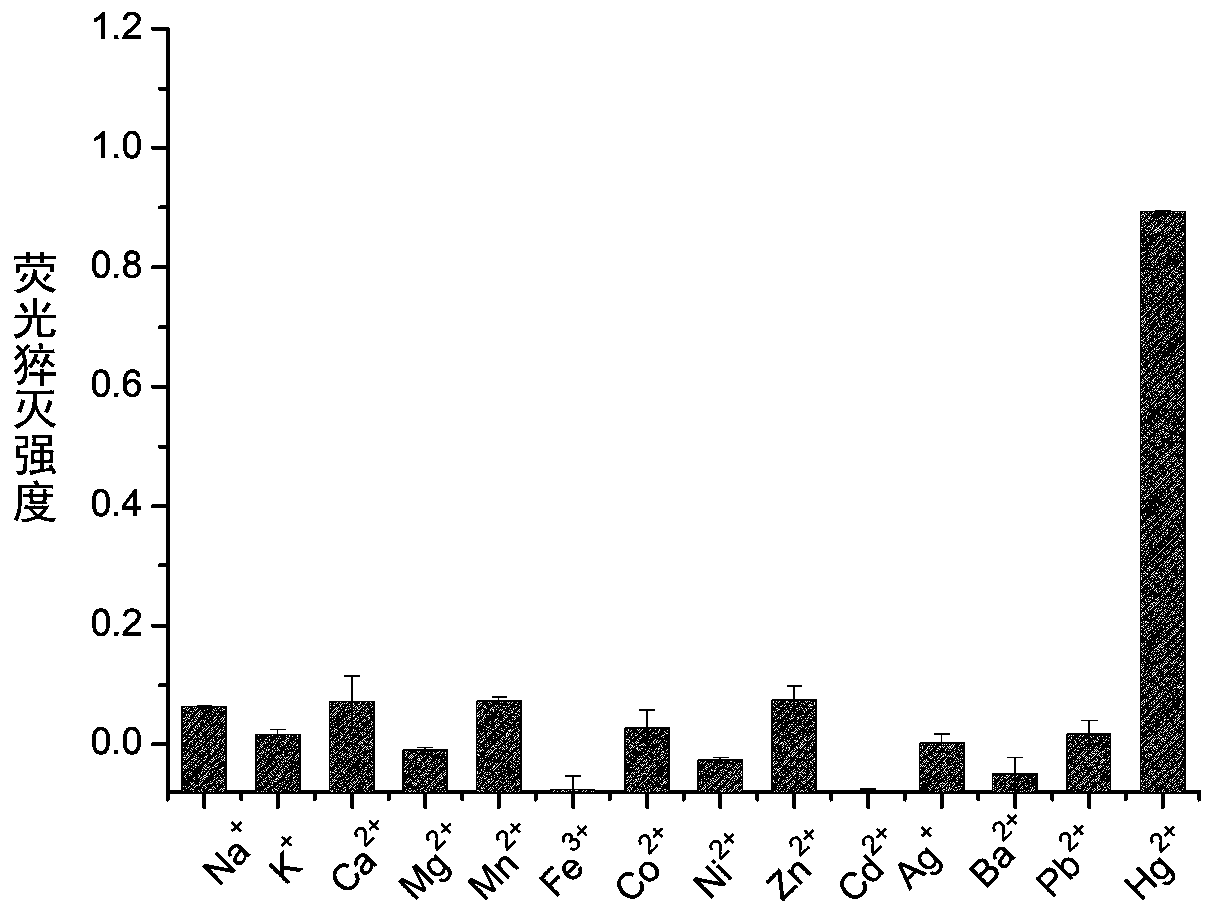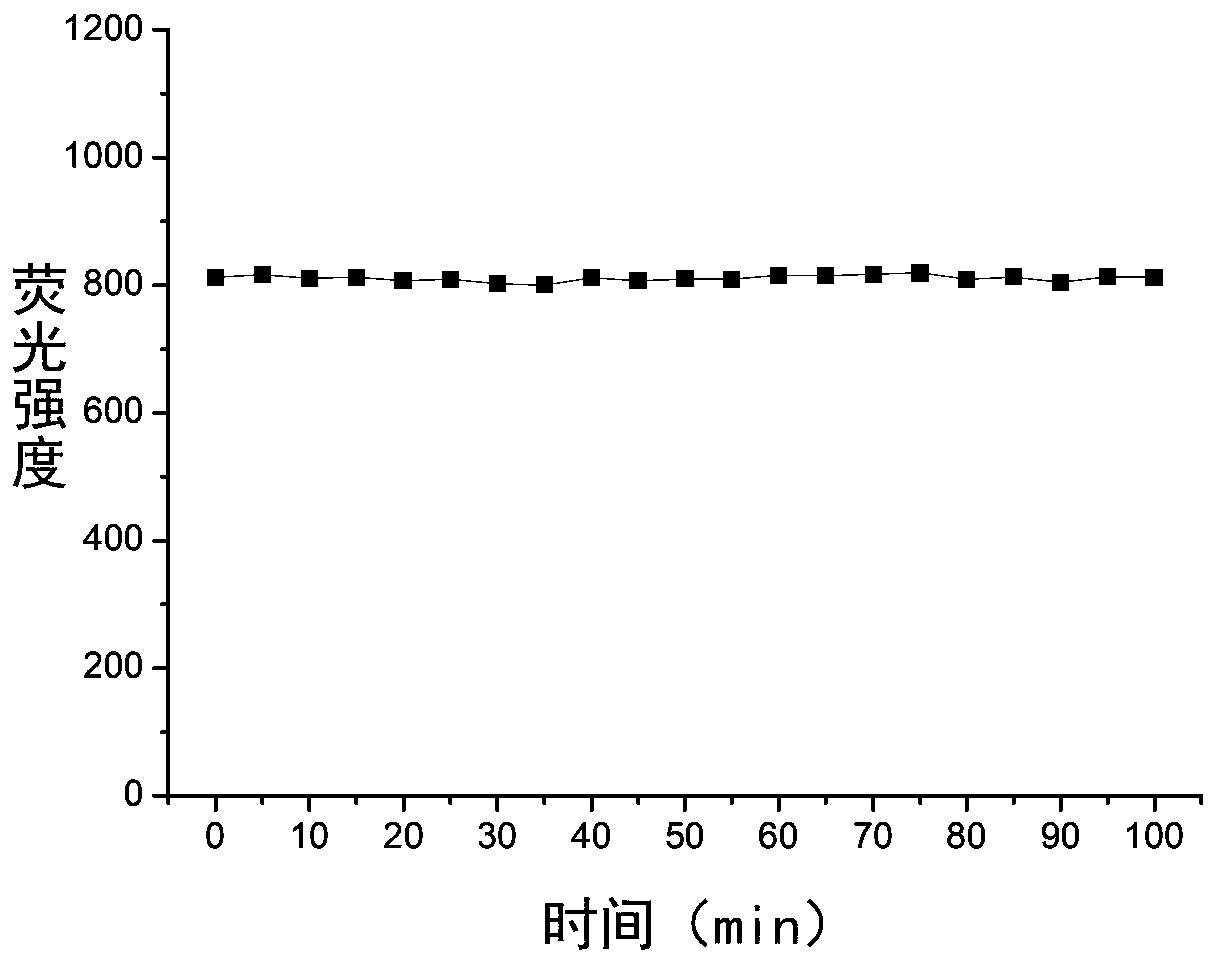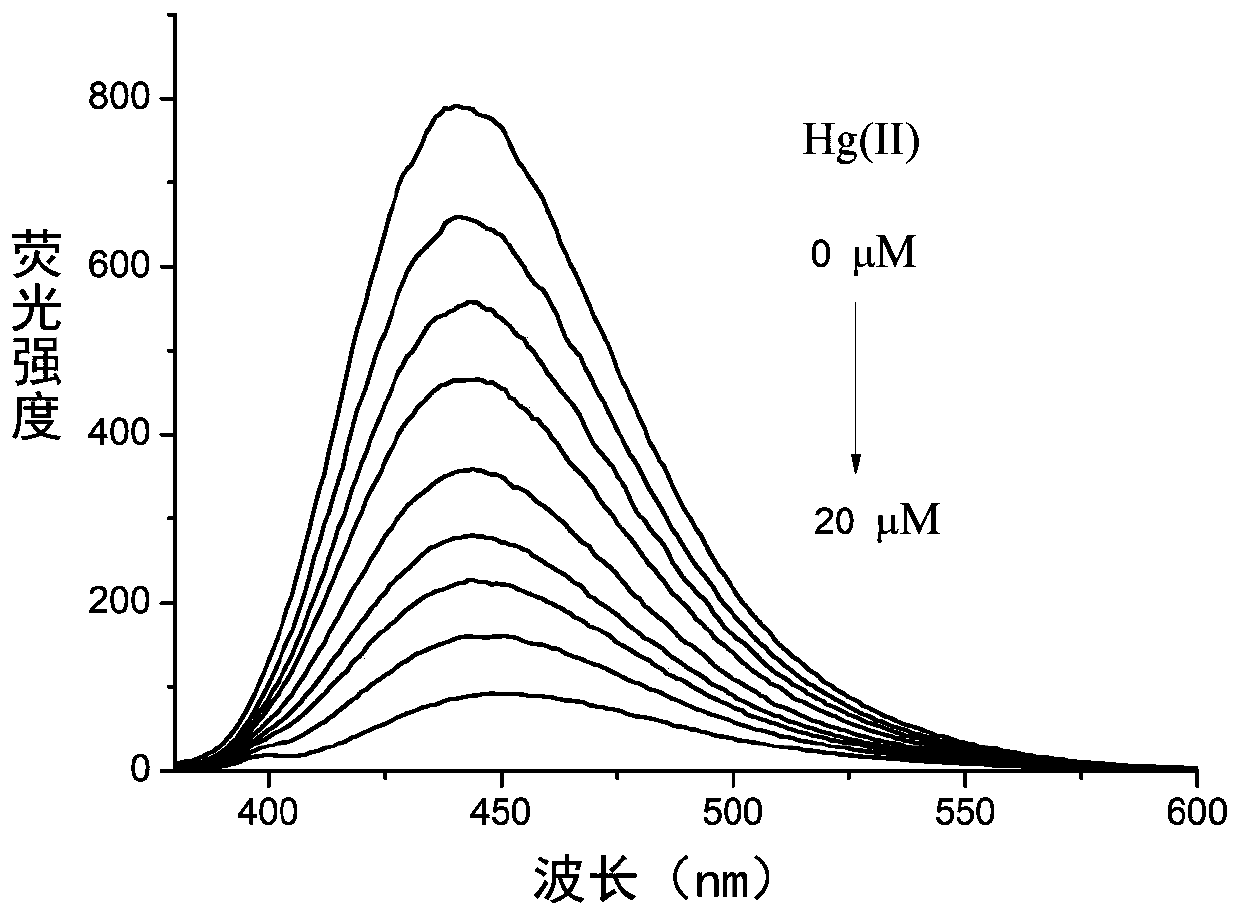Ascorbic acid carbon nanodot fluorescent probe, preparation method and application thereof
A technology of ascorbic acid and fluorescent probes, which is applied in the field of chemical measurement, can solve the problems of expensive equipment, limitations, and high detection costs, and achieve the effect of omitting the pretreatment process, avoiding the use of large instruments, and simple production
- Summary
- Abstract
- Description
- Claims
- Application Information
AI Technical Summary
Problems solved by technology
Method used
Image
Examples
Embodiment 1
[0029] The method steps of the preparation of the ascorbic acid carbon nano-dot fluorescent probe that the present invention proposes are as follows:
[0030] S1: Add polyethyleneimine to the reaction kettle containing ascorbic acid solution, seal it, and then heat it to react, wherein the molecular weight of polyethyleneimine is 600, the concentration of ascorbic acid is 1.5μg / mL, the concentration of polyethyleneimine and ascorbic acid The molar ratio is 1:1, and the reaction conditions are heating temperature 180°C and reaction time 6h;
[0031] S2: Cool the solution after the reaction in S1 to room temperature to obtain a brown liquid, and perform membrane filtration on it, wherein the membrane filtration is a needle filter of 0.45 μM;
[0032] S3: Dialyze the solution filtered by the membrane in S2, wherein the dialysis condition is that the Dalton molecular weight of the dialysis bag is 1000, the dialysis time is 8 hours, and the ultrapure water is changed every 2 hours;...
Embodiment 2
[0035] The method steps of the preparation of the ascorbic acid carbon nano-dot fluorescent probe that the present invention proposes are as follows:
[0036] S1: Add polyethyleneimine to the reaction kettle containing ascorbic acid solution, seal it, and then heat it to react, wherein the molecular weight of polyethyleneimine is 10000, the concentration of ascorbic acid is 2.5μg / mL, the concentration of polyethyleneimine and ascorbic acid The molar ratio is 1:40, and the reaction conditions are a heating temperature of 220°C and a reaction time of 8 hours;
[0037] S2: Cool the solution after the reaction in S1 to room temperature to obtain a brown liquid, and perform membrane filtration on it, wherein the membrane filtration is a needle filter of 0.45 μM;
[0038] S3: Dialyze the solution filtered by the membrane in S2, wherein the dialysis conditions are that the Dalton molecular weight of the dialysis bag is 10000, the dialysis time is 12 hours, and the ultrapure water is ...
Embodiment 3
[0041] The method steps of the preparation of the ascorbic acid carbon nano-dot fluorescent probe that the present invention proposes are as follows:
[0042] S1: Add polyethyleneimine to the reaction kettle containing ascorbic acid solution, seal it, and then heat it for reaction, wherein the molecular weight of polyethyleneimine is 10000, the concentration of ascorbic acid is 2μg / mL, the molar ratio of polyethyleneimine and ascorbic acid The ratio is 1:20, and the reaction conditions are heating temperature 200°C and reaction time 7h;
[0043] S2: Cool the solution after the reaction in S1 to room temperature to obtain a brown liquid, and perform membrane filtration on it, wherein the membrane filtration is a needle filter of 0.45 μM;
[0044] S3: Dialyze the solution filtered by the membrane in S2, wherein the dialysis conditions are that the Dalton molecular weight of the dialysis bag is 1000, the dialysis time is 10 hours, and the ultrapure water is changed every 2.5 hour...
PUM
| Property | Measurement | Unit |
|---|---|---|
| Concentration | aaaaa | aaaaa |
| Concentration | aaaaa | aaaaa |
| Linear correlation coefficient | aaaaa | aaaaa |
Abstract
Description
Claims
Application Information
 Login to View More
Login to View More - R&D
- Intellectual Property
- Life Sciences
- Materials
- Tech Scout
- Unparalleled Data Quality
- Higher Quality Content
- 60% Fewer Hallucinations
Browse by: Latest US Patents, China's latest patents, Technical Efficacy Thesaurus, Application Domain, Technology Topic, Popular Technical Reports.
© 2025 PatSnap. All rights reserved.Legal|Privacy policy|Modern Slavery Act Transparency Statement|Sitemap|About US| Contact US: help@patsnap.com



